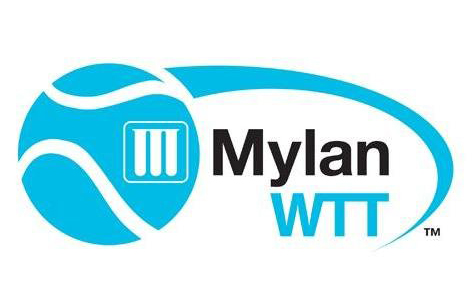Tennis Moves Closer to On-Player Audio
Story Highlights
All of that noise and the rest of the tennis soundscape have been captured for television mainly by shotgun microphones around the perimeters of the courts. However, Mylan WTT — formerly World TeamTennis, the league founded in 1974 and revitalized by Billie Jean King in 1981 — has become the first competitive tennis body to allow microphones to be placed on players for broadcast. During the six-team summer season, July 16-Aug. 5 this year, selected players, coaches, and umpires have been wired for sound that goes out over ESPN3, Tennis Channel, and RSNs Comcast SportsNet, Altitude, Mediacom, and MSG. ESPN2 will join the coverage of the Finals on Aug. 5, when the top two teams from the regular-season faceoff for the King Trophy at the Omni La Costa Resort & Spa in Carlsbad, CA.
 Tennis players are taking a page from the audio playbook of the NBA, NHL, and other leagues, deploying Q5X QT-5100 PlayerMics on participants. These were supplied to Mylan WTT by Bexel and are the same as the units currently used by the NBA, NFL, and NHL.
Tennis players are taking a page from the audio playbook of the NBA, NHL, and other leagues, deploying Q5X QT-5100 PlayerMics on participants. These were supplied to Mylan WTT by Bexel and are the same as the units currently used by the NBA, NFL, and NHL.
The match between the Washington Kastles and the New York Empire on July 19 at the Kastles Stadium in Washington, DC, was the first time that on-player audio during a professional tennis match was broadcast live on television. Quantum5X CEO Paul Johnson credits Bexel VP, Account Development, Lee Estroff with promoting this idea and getting the technology into the league’s hands.
“I am very excited about this for several reasons,” says Johnson. “Firstly, we have wanted to mike professional tennis for some time, and this has been the first opportunity we’ve had to accomplish this in a significant way with highly ranked professional tennis stars. Secondly, the audio feed was aired live rather than utilized for postproduction of high lights.”
The live feed, with a delay of up to four seconds, was sent to digital outlets like ESPN 3. Tennis Channel, Comcast SportsNet, and RSNs Altitude, Mediacom, and MSG will air the matches at a later date.
According to Jason Spitz, SVP, marketing, Mylan WTT, the miking process is a work in progress, experimenting with pouches sewn into compression vests, as is done in the NBA, or using Ursa Straps used often in film and television production.
The league produces the broadcasts, contracting with Bexel for support and a crew consisting of an A1 and three A2s per match, with one A2 dedicated to RF duties. Between players, coaches, and umpires, as well as commentators and sideline reporters, each match has as many as 30 audio sources, most of them wireless. The productions are uplinked via satellite to ESPN’s Bristol, CT, studios for broadcast.
Spitz considers the effort worthwhile, with player audio the centerpiece of engaging tennis viewers on a more visceral level.
“We’re trying to give the tennis fan an insider view of the sport,” he says, suggesting that Mylan WTT almost revels in the kind of clatter that the traditional doyens of the sport may find disagreeable. “We have an announcer with a PA system. We encourage the crowd to engage. It’s more like an NCAA atmosphere than a WTA environment. In many ways, this is the opposite of Wimbledon. We’re translating the energy and excitement that takes place onsite into a broadcast, and having the player sound is critical for that.”
